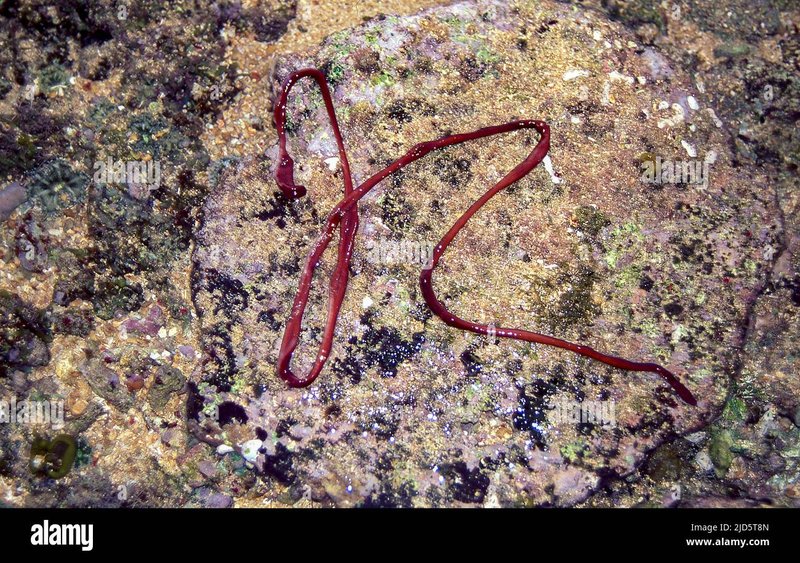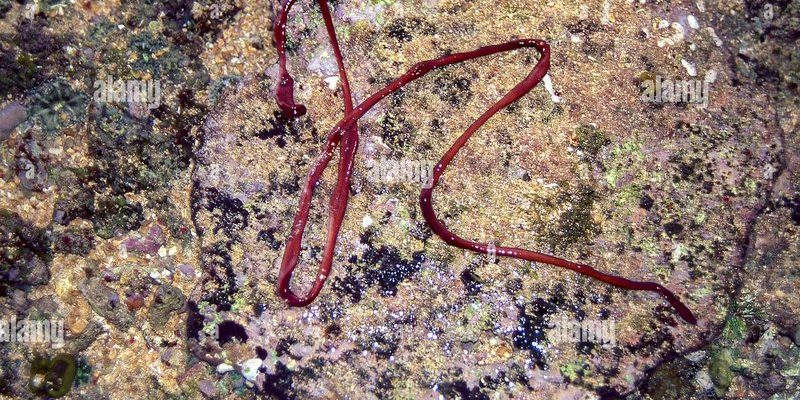
It’s kind of like the difference between a cozy winter scarf and a light summer shawl. Both serve their purpose, but they’re designed for different climates. In this article, we’ll dive into the intriguing world of ribbon worms and explore how they adapt to cold and tropical waters. Let’s unravel the mystery!
What Are Ribbon Worms?
Ribbon worms, or nemerteans, are soft-bodied invertebrates that belong to a phylum called Nemertea. They can be found in a variety of environments, from deep ocean floors to sandy shores. What sets them apart from other worms is their long, ribbon-like bodies that can stretch several feet long! Some species even possess a unique, sticky proboscis, which they use to capture prey.
These creatures are often mistaken for flatworms or other types of worms because of their elongated shape. However, ribbon worms can be quite colorful, exhibiting vibrant hues that make them stand out against the ocean floor. The diversity in their appearance is just one of the ways they adapt to their specific habitats.
Cold Water Ribbon Worms: Characteristics and Adaptations
In colder waters, ribbon worms have evolved specific adaptations to survive and thrive in their environments. For one, their slower metabolism allows them to conserve energy when temperatures drop. This means they can go longer periods without food while maintaining their bodily functions. Isn’t that neat?
Additionally, cold water ribbon worms tend to have thicker bodies and more robust skin. This helps protect them from harsh conditions. Think of it like wearing a puffy jacket in winter—you’ll stay warmer and more comfortable!
Here’s a quick look at some key characteristics of cold water ribbon worms:
- Thicker body structure for insulation against colder temperatures.
- Slower metabolism to conserve energy.
- Variety of colors that can range from muted tones to vibrant hues.
Tropical Ribbon Worms: Living the Warm Life
On the flip side, tropical ribbon worms are designed for a more vibrant ecosystem, teeming with life and competition. These warm-water species tend to have a quicker metabolism, allowing them to take advantage of the abundant food sources available in their biodiverse surroundings.
In these tropical environments, you’ll find ribbon worms with more colorful patterns and thinner bodies. Their vibrant colors not only serve to attract mates but also to warn potential predators. It’s like wearing bright colors during the summer to stand out at a beach party—only in the ocean!
Some tropical ribbon worms also exhibit remarkable behaviors, like rapid movements to escape threats. Here’s what makes them special:
- Thinner bodies for agility and speed.
- Bright colors for mating displays and predator warnings.
- Faster metabolism helps them thrive in nutrient-rich waters.
Feeding Habits: Cold Water vs. Tropical Ribbon Worms
Both cold water and tropical ribbon worms are carnivorous, but their feeding habits can differ due to their environments. Cold water species generally feed on smaller organisms, like small crustaceans and plankton. Their slower metabolism means they’re often less active hunters, patiently waiting for prey to come within reach.
Conversely, tropical ribbon worms may be more aggressive hunters. They often prey on larger organisms, utilizing their sticky proboscis to capture unsuspecting fish or invertebrates. Think of it as the difference between a calm, leisurely picnic and a lively buffet where everyone’s racing to grab the best bites.
Here’s a side-by-side of their feeding habits:
| Cold Water Ribbon Worms | Tropical Ribbon Worms |
| Feed on smaller organisms | Prey on larger organisms |
| Less active hunters | Aggressive hunters |
Habitat and Distribution: Where to Find Them
Ribbon worms are found in a variety of oceanic environments, but where you find them largely depends on their specific adaptations. Cold water ribbon worms are typically located in the Arctic and Antarctic regions, as well as deeper, colder parts of the ocean. You might stumble upon them while exploring rocky coastlines or sandy seabeds.
On the other hand, tropical ribbon worms can be found in coral reefs, mangroves, and other dynamic environments throughout the tropics. They thrive in areas where biodiversity is high, and life is bustling. If you’re ever snorkeling or diving in a tropical location, keep an eye out for these colorful critters!
Environmental Impact and Conservation
It’s important to recognize the role ribbon worms play in their ecosystems. They help control smaller prey populations and recycle nutrients, which keeps the ocean environment healthy. However, both cold water and tropical waters face threats from climate change, pollution, and habitat destruction.
Conserving these delicate ecosystems is vital to the survival of ribbon worms and countless other marine species. Sustainable practices, such as reducing plastic waste and preserving natural habitats, can make a significant difference. After all, protecting the environment is like keeping a garden healthy—it flourishes when we care for it.
In summary, ribbon worms are fascinating creatures that showcase the incredible diversity of marine life. They adapt to their environments in unique ways, with cold water species exhibiting robust characteristics and tropical species displaying vibrant colors and faster behaviors. Whether you’re out exploring the chilly depths or basking in the warmth of tropical waters, keep an eye out for these remarkable worms.
Understanding how these animals fit into our ecosystems can deepen our appreciation for ocean life. So, the next time you find yourself at the beach or wandering by the shore, remember the hidden wonders beneath the waves—like ribbon worms!

